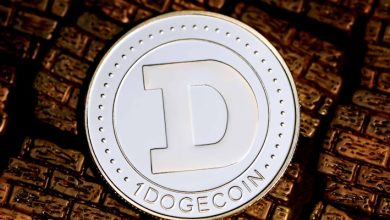What Are Stablecoins and Why Are They Important?

- Understanding the concept of stablecoins
- The benefits of stablecoins in the crypto market
- How stablecoins are different from traditional cryptocurrencies
- The role of stablecoins in reducing price volatility
- Regulatory challenges facing stablecoins
- The future of stablecoins in the financial industry
Understanding the concept of stablecoins
Stablecoins are a type of cryptocurrency that is designed to have a stable value, unlike other cryptocurrencies that can be highly volatile. They are typically pegged to a stable asset, such as a fiat currency like the US dollar or a commodity like gold. This pegging helps to minimize price fluctuations and make stablecoins more reliable for everyday transactions.
One of the key benefits of stablecoins is that they offer a way to transfer value across borders quickly and easily. Because stablecoins are pegged to stable assets, they can provide a more predictable store of value compared to traditional cryptocurrencies. This stability makes them attractive for use in various applications, such as remittances, international trade, and decentralized finance (DeFi) platforms.
There are different types of stablecoins, including centralized stablecoins, algorithmic stablecoins, and asset-backed stablecoins. Centralized stablecoins are issued by a central authority and are typically backed by reserves of the stable asset. Algorithmic stablecoins, on the other hand, use algorithms to adjust the coin’s supply in order to maintain its stability. Asset-backed stablecoins are backed by reserves of the stable asset, such as cash or other cryptocurrencies.
Overall, stablecoins play a crucial role in the cryptocurrency ecosystem by providing a stable alternative to traditional cryptocurrencies. They offer a way to mitigate the volatility that is often associated with cryptocurrencies, making them more suitable for everyday use. As the popularity of stablecoins continues to grow, they are likely to play an increasingly important role in the future of finance.
The benefits of stablecoins in the crypto market
Stablecoins play a crucial role in the cryptocurrency market as they offer a more stable alternative to traditional cryptocurrencies like Bitcoin and Ethereum. One of the main benefits of stablecoins is their ability to minimize price volatility, making them a more reliable store of value for both investors and traders. This stability is achieved by pegging the value of stablecoins to a reserve asset, such as the US dollar or gold.
Another advantage of stablecoins is their ability to facilitate faster and more cost-effective transactions compared to other cryptocurrencies. Because stablecoins are pegged to a stable asset, their value remains relatively constant, allowing users to send and receive payments without having to worry about price fluctuations. This makes stablecoins an attractive option for businesses looking to streamline their payment processes and reduce transaction fees.
Furthermore, stablecoins can also serve as a hedge against market volatility, providing investors with a safe haven during times of uncertainty. By holding stablecoins in their portfolios, investors can protect themselves from sudden price swings in the cryptocurrency market while still maintaining exposure to the potential upside of digital assets. This diversification can help reduce overall risk and improve portfolio stability.
Overall, stablecoins offer a wide range of benefits that make them an essential component of the crypto market. Whether it’s providing stability, facilitating faster transactions, or serving as a hedge against volatility, stablecoins play a crucial role in driving adoption and innovation in the digital asset space. As the crypto market continues to evolve, stablecoins are likely to become even more important in ensuring the stability and growth of the industry.
How stablecoins are different from traditional cryptocurrencies
Traditional cryptocurrencies like Bitcoin and Ethereum are known for their price volatility, which can make them risky investments. In contrast, stablecoins are designed to have a more stable value by pegging it to a reserve asset, such as fiat currency or commodities. This stability is achieved through various mechanisms, including collateralization, algorithmic adjustments, and centralized control.
One key difference between stablecoins and traditional cryptocurrencies is their intended use case. While cryptocurrencies like Bitcoin are often seen as digital gold or a store of value, stablecoins are primarily used for everyday transactions and as a medium of exchange. This makes stablecoins more suitable for activities like remittances, e-commerce, and decentralized finance (DeFi).
Another important distinction is the level of decentralization. Traditional cryptocurrencies are typically decentralized, meaning that they operate on a peer-to-peer network without a central authority. In contrast, stablecoins can be centralized, meaning that they are issued and managed by a single entity. This centralized control can provide greater stability but also raises concerns about censorship and counterparty risk.
Overall, stablecoins offer a unique blend of stability and utility that sets them apart from traditional cryptocurrencies. By maintaining a fixed value and enabling seamless transactions, stablecoins have the potential to bridge the gap between the traditional financial system and the world of cryptocurrencies. As the demand for digital assets continues to grow, stablecoins are poised to play an increasingly important role in the global economy.
The role of stablecoins in reducing price volatility
Stablecoins play a crucial role in reducing price volatility within the cryptocurrency market. These digital assets are pegged to a stable asset, such as fiat currency or commodities, to minimize fluctuations in value. By providing a reliable store of value, stablecoins help investors mitigate the risks associated with the extreme price swings commonly seen in traditional cryptocurrencies.
One of the key benefits of stablecoins is their ability to maintain a consistent value over time. This stability makes them an attractive option for both traders and merchants looking to avoid the uncertainty that often plagues other digital assets. Additionally, stablecoins can be used as a medium of exchange for everyday transactions, offering a practical solution for those seeking a reliable alternative to traditional fiat currencies.
Moreover, stablecoins serve as a valuable tool for hedging against market volatility. Traders can use these digital assets to protect their investments during periods of uncertainty, reducing their exposure to risk. This feature makes stablecoins an essential component of a well-diversified investment portfolio, providing stability and security in an otherwise volatile market.
Overall, stablecoins play a critical role in promoting stability and reducing price volatility within the cryptocurrency ecosystem. By offering a secure and reliable store of value, these digital assets help to mitigate the risks associated with the highly volatile nature of traditional cryptocurrencies. As the demand for stablecoins continues to grow, their importance in the market is only expected to increase in the coming years.
Regulatory challenges facing stablecoins
Stablecoins have gained popularity in the cryptocurrency market due to their ability to maintain a stable value, unlike most cryptocurrencies that are known for their price volatility. However, this stability raises regulatory challenges that need to be addressed to ensure the legitimacy and security of stablecoin transactions.
One of the main regulatory challenges facing stablecoins is the lack of clear guidelines from government authorities. As stablecoins operate across borders and are not tied to a specific country’s currency, regulators struggle to determine which laws apply to them. This ambiguity makes it difficult for stablecoin issuers to comply with regulations and for users to understand their rights and protections.
Another regulatory challenge is the potential for stablecoins to be used for illegal activities such as money laundering and terrorist financing. Without proper oversight, stablecoins could provide a means for criminals to transfer funds without detection. Regulators are concerned about the anonymity and lack of transparency in stablecoin transactions, which makes it difficult to track and prevent illicit activities.
Furthermore, the decentralized nature of stablecoins poses a challenge for regulators in enforcing compliance and monitoring transactions. Unlike traditional financial institutions that are subject to strict regulations and oversight, stablecoins operate on blockchain networks that are decentralized and difficult to control. Regulators need to find ways to ensure that stablecoin issuers and users comply with anti-money laundering and know-your-customer regulations.
In conclusion, regulatory challenges facing stablecoins require a coordinated effort from government authorities, industry players, and technology experts to establish clear guidelines and standards. By addressing issues such as cross-border regulations, illicit activities, and decentralized governance, regulators can create a framework that promotes the safe and responsible use of stablecoins in the financial market.
The future of stablecoins in the financial industry
Stablecoins have gained significant traction in the financial industry due to their ability to provide stability and security in the volatile cryptocurrency market. These digital assets are pegged to a stable asset, such as a fiat currency or a commodity, to minimize price fluctuations. As a result, stablecoins offer a reliable store of value and a medium of exchange for users.
The future of stablecoins in the financial industry looks promising as more institutions and individuals recognize their benefits. With the rise of decentralized finance (DeFi) applications, stablecoins have become essential for facilitating various financial activities, such as lending, borrowing, and trading. Moreover, stablecoins offer a more efficient and cost-effective alternative to traditional payment systems, enabling faster cross-border transactions.
As regulators continue to scrutinize the cryptocurrency market, stablecoins are expected to play a crucial role in shaping the future of digital finance. By complying with regulatory requirements and implementing robust security measures, stablecoin issuers can build trust among users and attract more investors. Additionally, the integration of stablecoins with central bank digital currencies (CBDCs) could further enhance their utility and adoption in the mainstream financial system.
Overall, stablecoins are poised to revolutionize the way we transact and store value in the digital age. With their stability, security, and efficiency, these digital assets have the potential to become a cornerstone of the modern financial ecosystem. As the market continues to evolve, stablecoins are likely to play an increasingly important role in driving innovation and reshaping the financial landscape for years to come.



